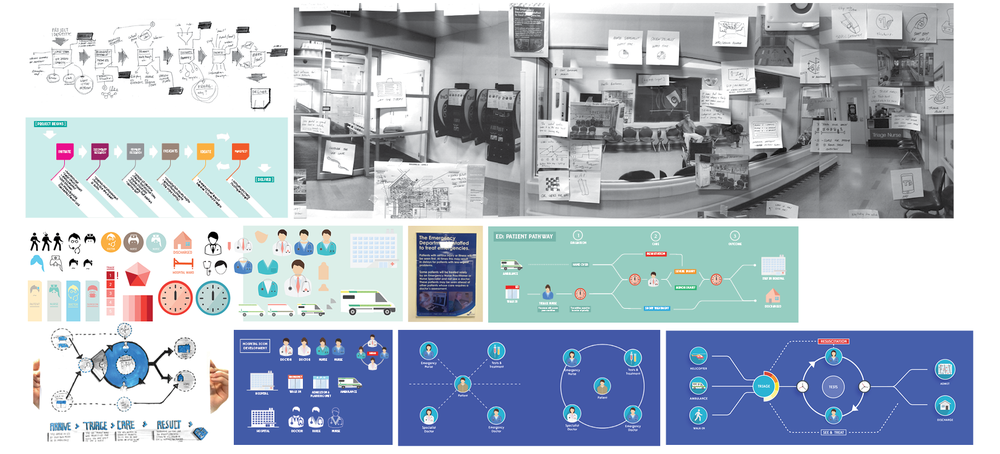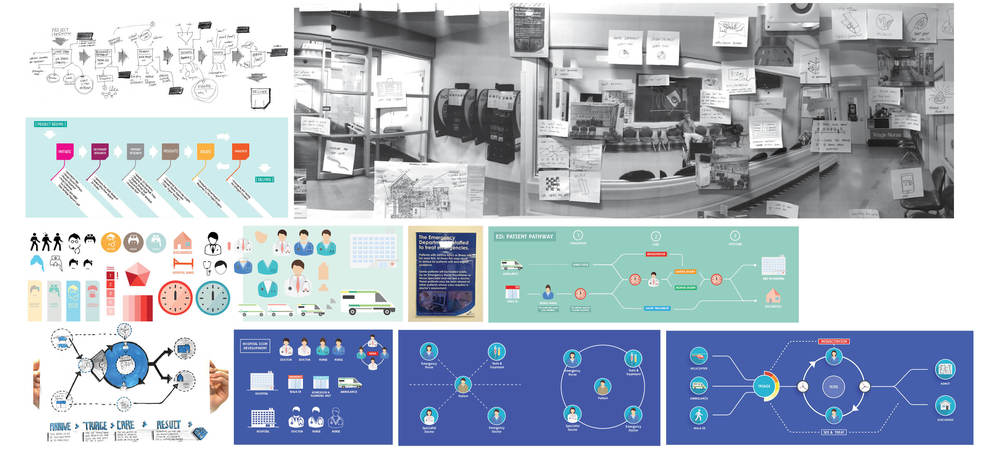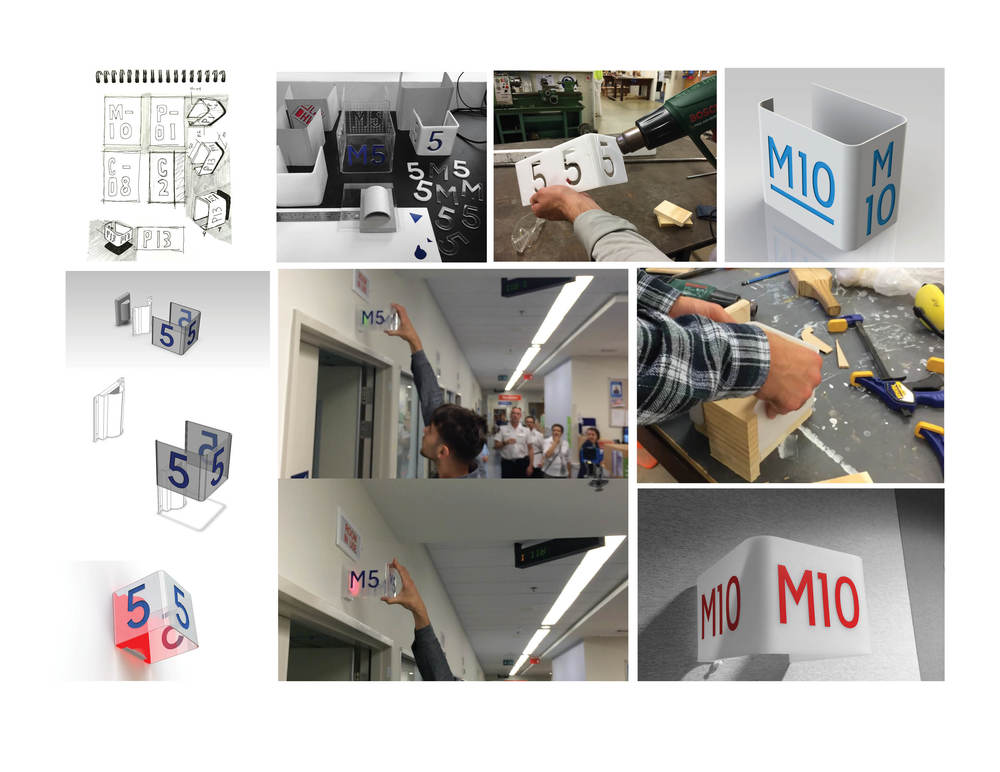
Much of our recent work and collaboration with ED staff has focused on the development of the ED Signage and, as a result, development of the main project - Patient Pathway - has somewhat slowed. In order to give this project new momentum, we needed to get some real feedback on our current understanding of the Adult Emergency Department patient journey. We had developed a series of journey map iterations and a graphic/visual language, which we were able to present to the Facilities Nurse yesterday for discussion and feedback. This was the first opportunity to get some critical feedback from ED staff, and would allow us to test our initial assumptions/understanding and push the project forwards. Feedback regarding visual iconography:
- As clinicians, we have the responsibility to communicate more to patients
- Generally doctors in ED wear blue scrubs, surgical doctors wear teal, specialists wear mufti, nurses wear blue scrubs, charge nurses wear red, flow nurses wear green - overall, not very clear
- Coloured, detailed icons could be used to demonstrate/communicate different staff roles
- Medical equipment details could also be used to differentiate roles - e.g. clinical staff wear stethoscopes, non-clinical do not
- A colour key could help patients/families understand the different staff roles within ED
- Plain, white icons are quite good for keeping things neutral - gender/culture
- Would be useful/helpful to explain different triage categories
- Helpful to communicate and define department terminologies - Triage is a term we want to educate people around; it is internationally used and has an interesting historical background
Feedback regarding journey map:
- Walk-in patients and patients brought in by ambulance all come through triage
- Triage direct St John paramedics to different areas
- Triage is a key component of four stages: Arrival, Triage, Nursing Assessment, Medical Assessment
- Five main areas: Resus, Acutes, Monitoring, waiting room and APU
- No matter what location, each patient is assessed by a nurse
- As a patient story develops, their category/priority may change
- Tests generally happen before being seen by a doctor
- Not all cases are 'injuries' - may be medical or surgical problems also
- Final stage should simply be kept to 'Admitted' or 'Discharged'
- As for the location of the journey map, it was suggested we replace the large mat hung on the waiting room wall
With such a complex set a variable care pathways, it is tricky to refine a journey map down to a simple, coherent graphic. Our current line of thought focusses the journey map on a central ‘care cycle’ where tests as well as doctor and nurse assessments can take place in any order (as is often the case in ED).








